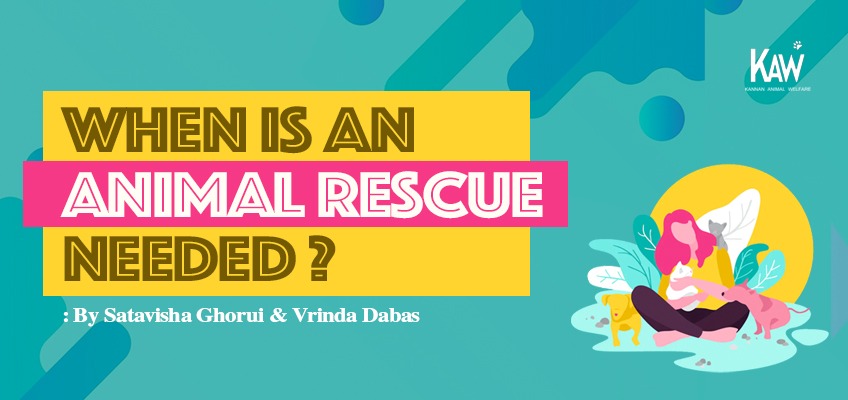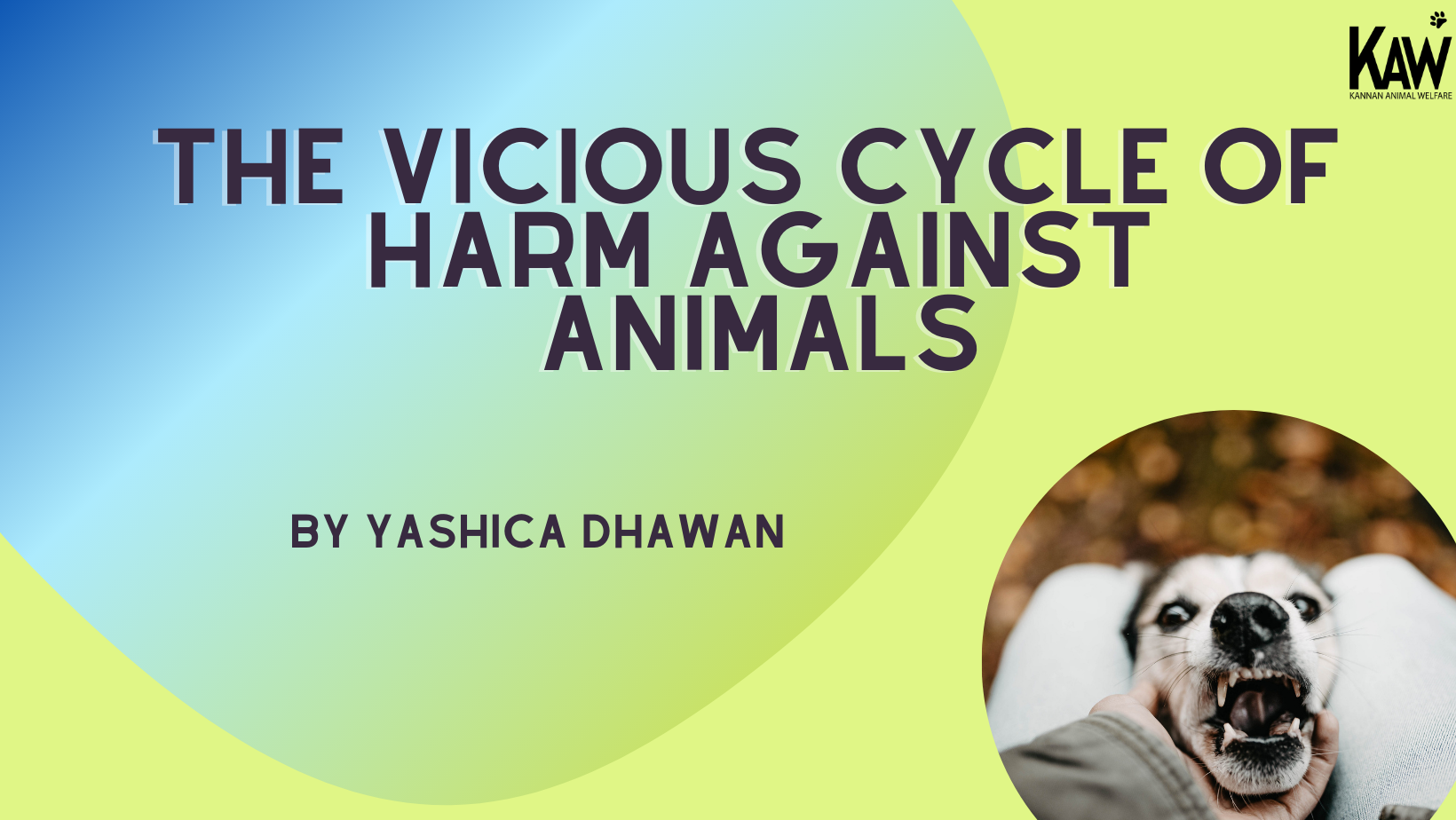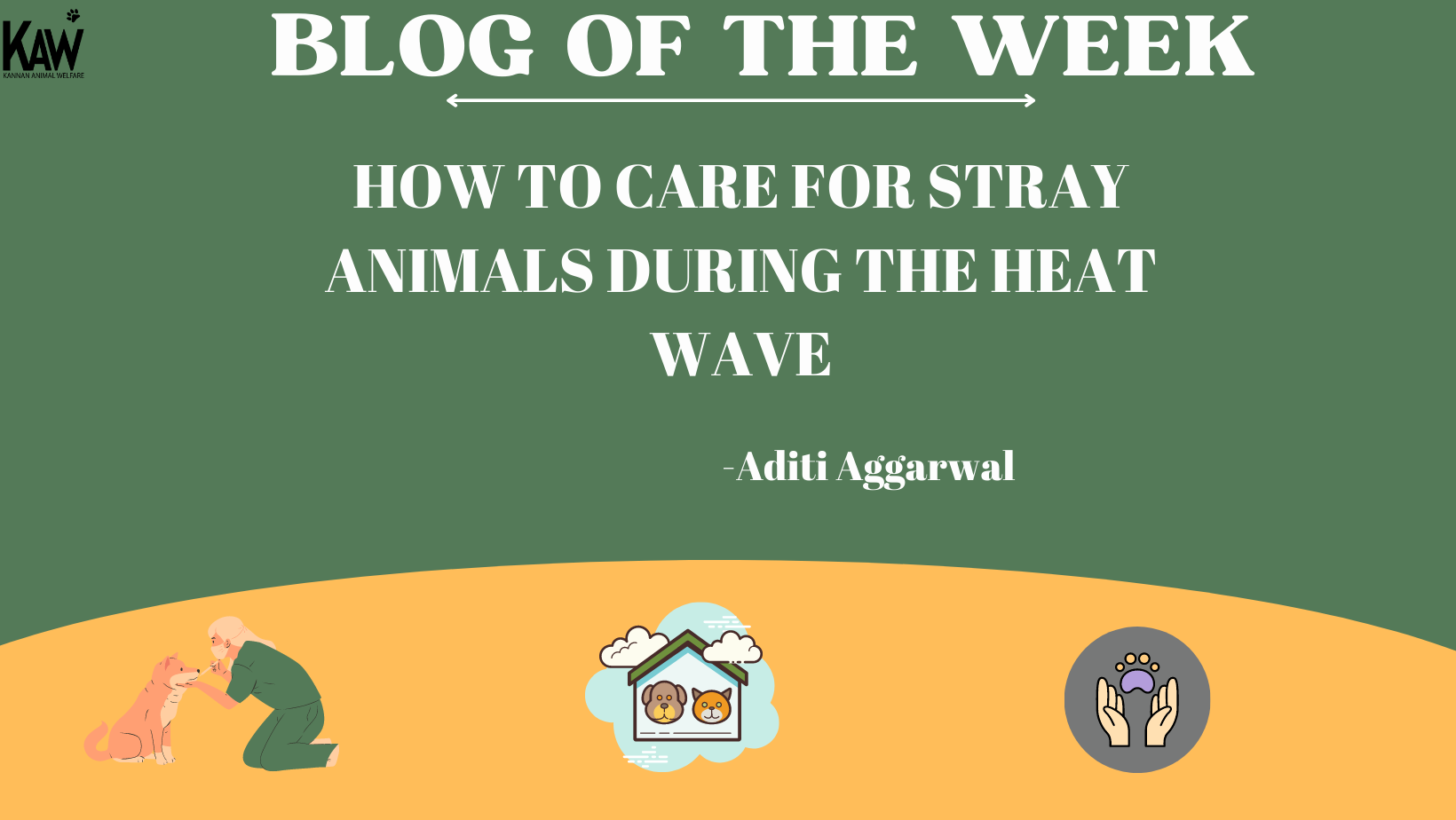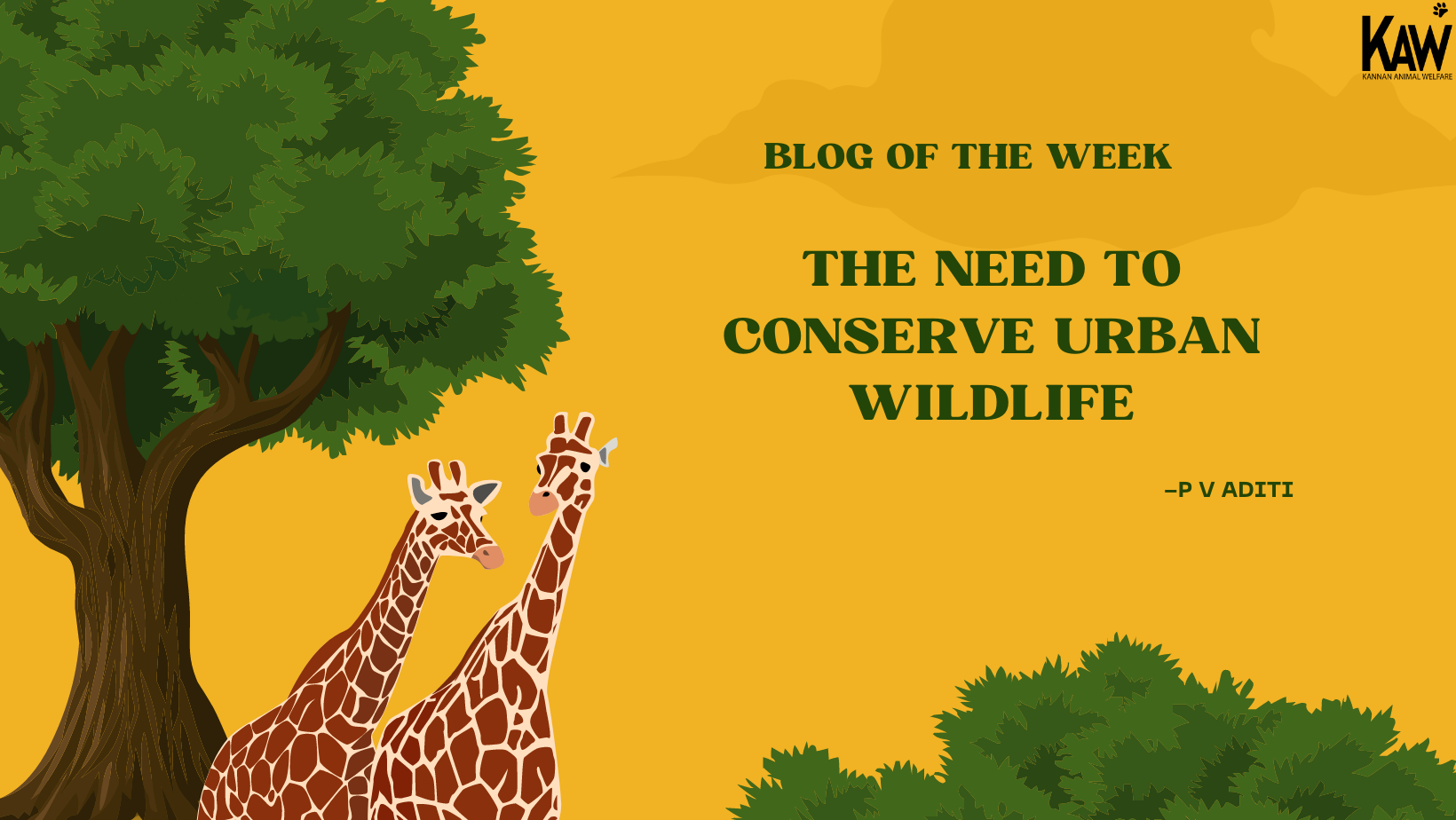SERIES: Individual Action & Animal Welfare
When Is an Animal Rescue Needed?
By Satavisha Ghorui & Vrinda Dabas
Introduction
Quite unfortunately, even with the advent of the 21st century and the plethora of animal protection rights that came with it, there still exist instances of animal neglect, abuse, killing, and poaching because some people simply don’t mind abusing helpless lives when it serves their purposes. The good news is that although animal abuse can be a difficult topic to discuss, people who choose to stand up against it send a strong message. One can therefore do their bit in helping fight animal cruelty by learning more about animal rescue initiatives and getting involved in them.
Animal rescue is a broad umbrella term that refers to any effort or initiative to save animals from cruelty, abuse, and neglect. An animal rescue operation thus identifies such cases of cruelty towards animals, recovers these animals from substandard conditions, and makes every effort to provide them with better lives.
In India and abroad, most municipalities host animal control units that respond to calls about animal cruelty. They investigate the perpetrators and help place the rescued animals in new homes. Moreover, animal rescue organisations often accept abused, neglected, malnourished, or abandoned animals.
When is animal rescue needed?
To be fair, every animal that is living in an unhealthy environment and is suffering deserves to be rescued. Although dogs and cats are more often the main targets of animal rescue operations, other animals - such as horses, cows, goats, rabbits, reptiles, etc. - are rescued as well.
That being said, shelters and rescue organisations cannot take in all the animals in need. Animals in shelters are exposed to their own set of risks, whether overcrowding or the rapid spread of infectious diseases. Puppies do not have the immunity to survive in a shelter. It is therefore very crucial not to simply rescue community animals, but rather to rescue responsibly. Identifying which cases are critical and which can be treated or addressed without the need for a rescue operation is key.
It is important to note here that some animals are easier to rehome than others. Sadly, millions of companion animals enter rescue shelters each year in India alone. Out of those, many do not make it, either because they arrive too unwell to recover, or because of insufficient facilities to house them in shelters which are both overcrowded and suffer from a lack of resources.
Identifying animals that need rescue
It is extremely difficult to quantify concepts like suffering and to determine who needs to be rescued and who does not.
More than half the animals who land up in shelters every year after rescue are dogs, ranging in age from newborn pups to seniors. These furry friends are mostly either rescued from the side of the road or are found running at large through neighborhoods. Others are abandoned by their caregivers who unwittingly allow their unsterilised pets to reproduce, contributing to the overpopulation of community animals.
One of the major causes of animal rescue involves pets that have been abused, mistreated, and neglected. These pets often are found with sores on their body, lesions, bruises, protruding ribs due to malnutrition, and snarled hair that has not been shaved, trimmed, or cleaned for a long time. In such cases, a qualified veterinarian should be consulted to check the medical condition and treatment path of the animal in question.
But not all cases of illness or injuries in community dogs are an emergency. Many ailments can be treated by the care of locals and a veterinary doctor. Rescuers are only advised to contact an NGO or an animal shelter if the severity of the case is high and rescuing is urgently needed. Overcrowded shelters can become breeding grounds for infectious diseases, often doing more harm than good for animals that would have otherwise been able to recover on their own. Canine distemper and parvovirus are some diseases that can ravage a shelter. It is, therefore, only appropriate to send a dog to a shelter if all else fails.
A major problem that comes with rescuing animals is that people often visit these rescue shelters only looking for puppies or companions in perfect physical condition. The preference, in such instances, always goes towards a clean slate and an adorable bundle of fur to take home. Furthermore, biases against certain breeds, such as our native Indian dogs, leave those furry friends without a home to go to; they are often never adopted and left in shelters, leading to overcrowding and mismanagement by the organisation. Thankfully, there is now a growing awareness of the need to provide a family and home to animals without discriminating against them based on breed, age, sex, health conditions, etc.
How to take action yourself
Acting on behalf of the animals in need of help can save lives. Remember: Always make sure you have done your best in trying to rescue an animal before making the decision to drop it off at a shelter! Here are a few things you can do along with members of your community to assist dogs in distress. Please visit the various links to the KAW Blog, which we’ve included throughout this section, to read more about key issues and best practices in animal welfare.
- Importance of Taking Action Yourself: Oftentimes, it is your urgent attention towards an ailing animal that can save its life. If you see an animal in an emergency situation, it is not enough to simply message an animal welfare organisation’s social media page or wait for an NGO to rescue the dog. The organisations might take time to respond and might not be able to provide appropriate solutions within time. Your decision to step up and take action firsthand can make or break the situation.
- Do Not Panic: Speak to the dog in a calm, confident tone and offer bite-sized treats to gain its trust. Do not yell or panic, as it can make the dog run away from you into traffic or even attack you. You should not appear like a threat to an animal that is already distressed. Avoid direct eye-contact, and muzzle the dog if possible. Use a towel to try to restrain the dog safely.
- Provide First-Aid: There are many simple and inexpensive first-aid procedures that you can do to provide assistance to an animal in need. Keep in mind that first-aid is not a substitute for professional care, and it is advised to take the rescued dog to see a vet immediately.
- Get Help From a Vet: Take into account the gravity of the situation and safely take the injured dog to a veterinary doctor. If the dog is unable to move, clear him/her from harm's way (away from traffic/other dogs) and call for a paravet or a Pet Ambulance. Contacts for vets are readily available on the internet, with your local municipality and animal welfare NGOs.
- Do Not Let Wounds Go Untreated or Skin Conditions Become Extreme: Stray dogs with small wounds often become infected with maggots. If you see a dog with wounds or observe maggots, provide immediate care to the dog. Do not leave maggot wounds untreated, as maggots can tunnel into the vital organs of the dog and prove fatal. Similarly, skin conditions like mange can be easily treated with the help of a vet.
- Take Special Care of Puppies: As mentioned before, newborn and young pups do not have the immunity to survive in a shelter. It is best to take care of community pups yourself instead of dropping them off at a shelter. Keep puppies in a safe and dry space, and start deworming and vaccinations immediately. Make sure the puppies stay with their mothers for as long as they are able to.
Why should one get involved in animal rescue?
Understandably, it takes a strong conviction to confront the realities behind animal cruelty. People involved in animal rescue organisations often are faced with disturbing cases of neglect, abuse, and suffering that take a toll on their mental health. Yet, one cannot give up on the cause, because we must consider these facts:
- No Living Being Deserves to Be Treated Poorly: Every life matters when it comes to maintaining a balance in the ecosystem. The loss of a certain breed or species creates a rupture in the biological diversity of the planet that can lead to seriously negative ecological consequences, such as human-induced extinction, endangerment, poaching, etc.
- Abused Animals That Get Away Are Dangerous: Often we come across stray cats or dogs in our neighborhood who seem to be irritated, restless, and confused; this is noticeable through excessive barking, growling, or scratching at surfaces. These situations unfold when dogs and cats have been abused for long periods, leading to them becoming frightened, irritable, and prone to fits of rage that can lead to attacks on surrounding people.
- Slaughtered Animals End Up in Your Plate: Due to factory farming, farm animals are often raised in huge numbers for slaughter and sale. These animals are also subjected to animal testing that results in painful trauma, constant fear, physical deformities, and eventual death. Animal byproducts, on the other hand, end up in retail and furnishing stores due to consumer demand for leather and fur materials.
Why ignoring the problem contributes to it
It is easy to pretend that animal cruelty and abuse don’t exist, simply because one’s pet gets treated like royalty at home and is well looked after. The reality, unfortunately, is far from the case.
Animal cruelty leads to overpopulation in rescue shelters because most organisations cannot look after and cater to the needs of every animal whom they save.
One doesn’t have to start their own animal rescue operation to make a difference for animals in their community. You can do your bit to help the cause by:
- Adopting an animal without discriminating amongst them
- Volunteering at local animal shelters to help rehome rescued friends
- Donating to trusted animal rescue organisations in cash or kind (supplies, food, clothes, health aids, etc.)
- Fostering furry friends until they find their “forever” home
- Reduce consuming animal products and amplify information about shelter animals
- Reporting animal abuse whenever it comes to notice
Creating a world where animals have rights and where those rights are respected demands intervention. People skirt the laws that protect animals, but we can continue to fight for this cause!






